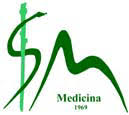Manejo Farmacológico da Fibrilação Atrial
Resumo
A fibrilação atrial (FA) é uma taquiarritmia supraventricular caracterizada pela falta de coordenação da atividade elétrica atrial, gerando uma inibição do nó sinusal (NSA), fazendo com que a sístole atrial não ocorra. A FA ocorre devido a anormalidades estruturais ou eletrofisiológicas que geram mudanças no tecido atrial e promovem impulsos de formação e propagação anormais. Objetivos: esclarecer o manejo farmacológico da FA. Metodologia: Realizou-se uma revisão de literatura em 11 artigos, publicados no período de 2003 a 2018. A busca desses artigos foi realizada nos sites SCIELO, PubMed Central, LILCAS, American Family Physician, Journal of Cardiac Arrhythmias e LANCET. Utilizando os descritores: fibrilação atrial, tratamento farmacológico, epidemiologia. Discussão: O seu tratamento é baseado no controle de ritmo, controle da frequência e a anticoagulação. O controle do ritmo pode ser feito por meio da cardioversão elétrica, mandatória nos pacientes com instabilidade hemodinâmica, ou cardioversão farmacológica, com uso de amiodarona e propafenona. O controle da frequência é importante para o manejo da FA, até mesmo para os pacientes que utilizaram a estratégia de controle de ritmo. Pode-se utilizar bloqueadores de canais de cálcio não-dihidropiridinas, betabloqueadores ou digoxina. A terapia de anticoagulação oral é parte essencial do tratamento da FA, ao reduzir o risco de eventos tromboembólicos. Conclusão: Na emergência, há duas estratégias principais para o tratamento da arritmia: o restabelecimento do ritmo sinusal ou a manutenção da FA com controle da frequência cardíaca, havendo ainda divergências quanto à superioridade de uma abordagem específica. A anticoagulação imediata dos pacientes dependerá da duração do episódio de FA, de seu perfil de risco para eventos tromboembólicos e sangramento. A correta decisão sobre a escolha das estratégias e fármacos na abordagem emergencial do paciente deve ser individualizada, atentado às comorbidades e as demandas do indivíduo no momento do atendimento.
Abstract
Atrial fibrillation (AF) is a supraventricular tachyarrhythmia characterized by the lack of coordination of atrial electrical activity, generating an inhibition of the sinus node (SNA), causing atrial systole not to occur. AF occurs due to structural or electrophysiological abnormalities. that generate changes in the atrial tissue and promote abnormal formation and propagation impulses. Objectives: to clarify the pharmacological management of atrial fibrillation (AF). Methodology: A literature review was carried out on 11 articles, published from 2003 to 2018. The search for these articles was performed on the websites SCIELO, PubMed Central, LILCAS, American Family Physician, Journal of Cardiac Arrhythmias and LANCET. Using the descriptors: atrial fibrillation, pharmacological treatment, epidemiology. Discussion: Its treatment is based on rhythm control, rate control and anticoagulation. Rhythm control can be performed through electrical cardioversion, which is mandatory in patients with hemodynamic instability, or pharmacological cardioversion, using amiodarone and propafenone. Rate control is important for the management of AF, even for patients who have used the rhythm control strategy. Non-dihydropyridine calcium channel blockers, beta-blockers, or digoxin may be used. Oral anticoagulation therapy is an essential part of the treatment of AF, as it reduces the risk of thromboembolic events. Conclusion: In the emergency room, there are two main strategies for the treatment of arrhythmia: the restoration of sinus rhythm or the maintenance of AF with heart rate control, although there are still disagreements as to the superiority of a specific approach. Patients' immediate anticoagulation will depend on the duration of the AF episode, their risk profile for thromboembolic events and bleeding. The correct decision on the choice of strategies and drugs in the emergency approach to the patient must be individualized, taking into account the comorbidities and the demands of the individual at the time of care.
Downloads
Publicado
Como Citar
Edição
Seção
Licença
Copyright (c) 2022 ACTA MSM - Periódico da EMSM

Este trabalho está licenciado sob uma licença Creative Commons Attribution-NonCommercial-NoDerivatives 4.0 International License.
Essa licença permite que outros façam download dos seus trabalhos e os compartilhem desde que atribuam crédito a você, mas sem que possam alterá-los de nenhuma forma ou utilizá-los para fins comerciais.




